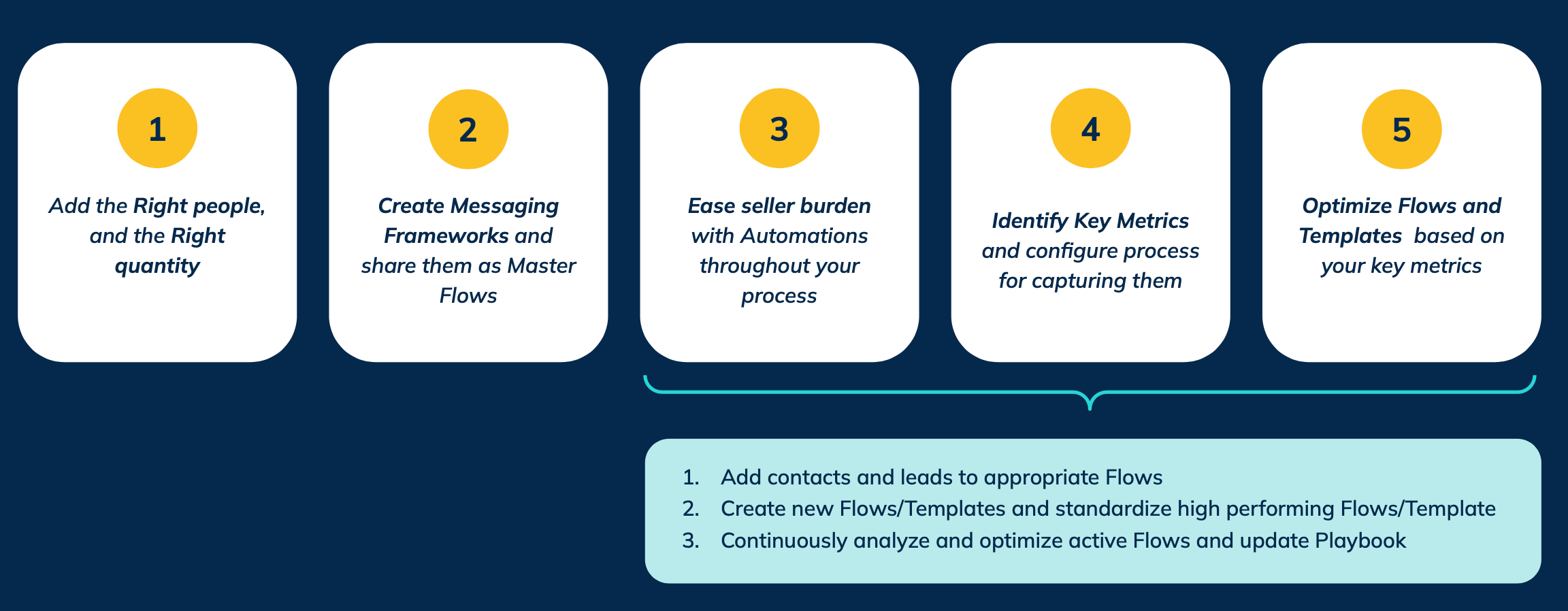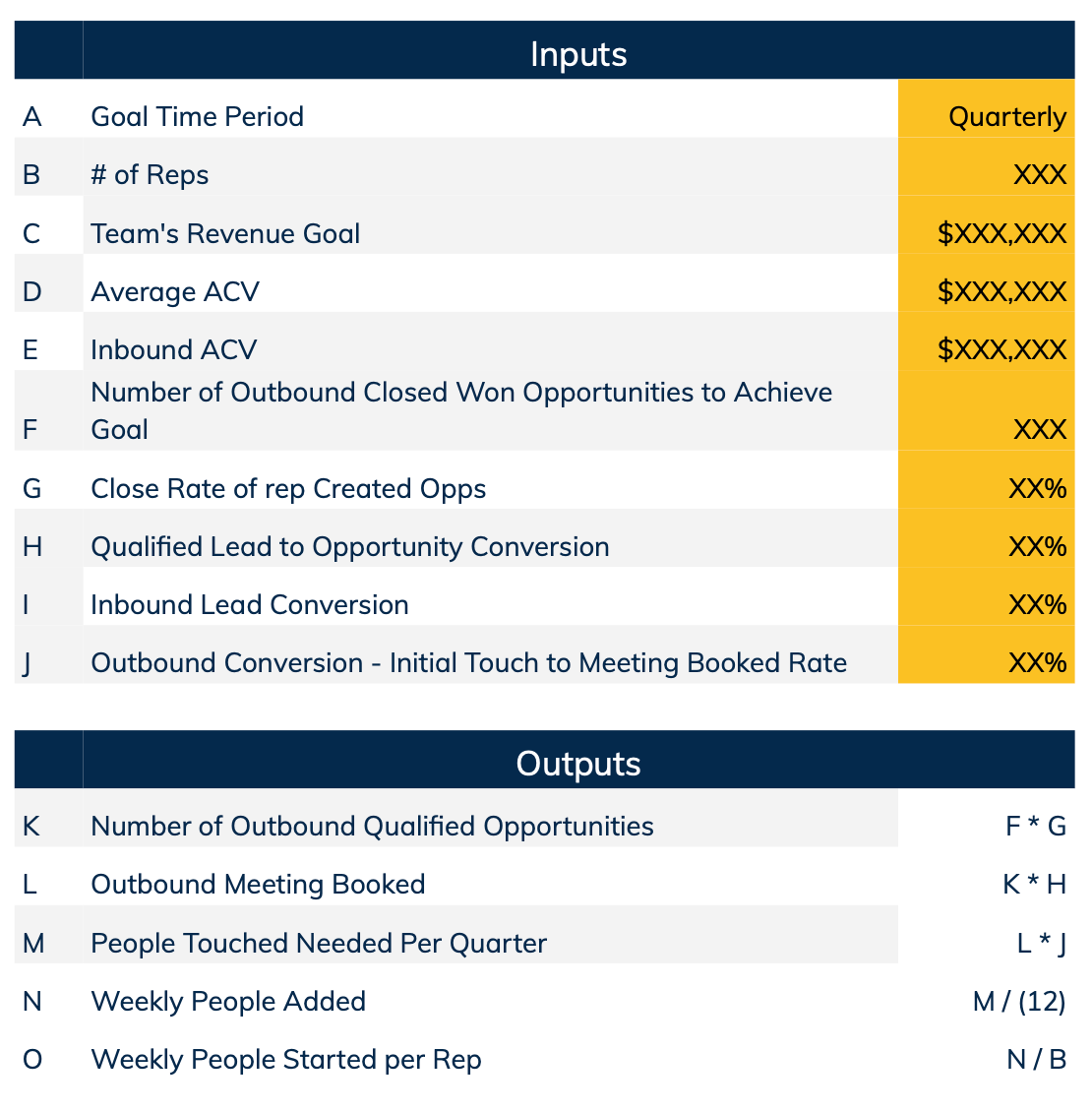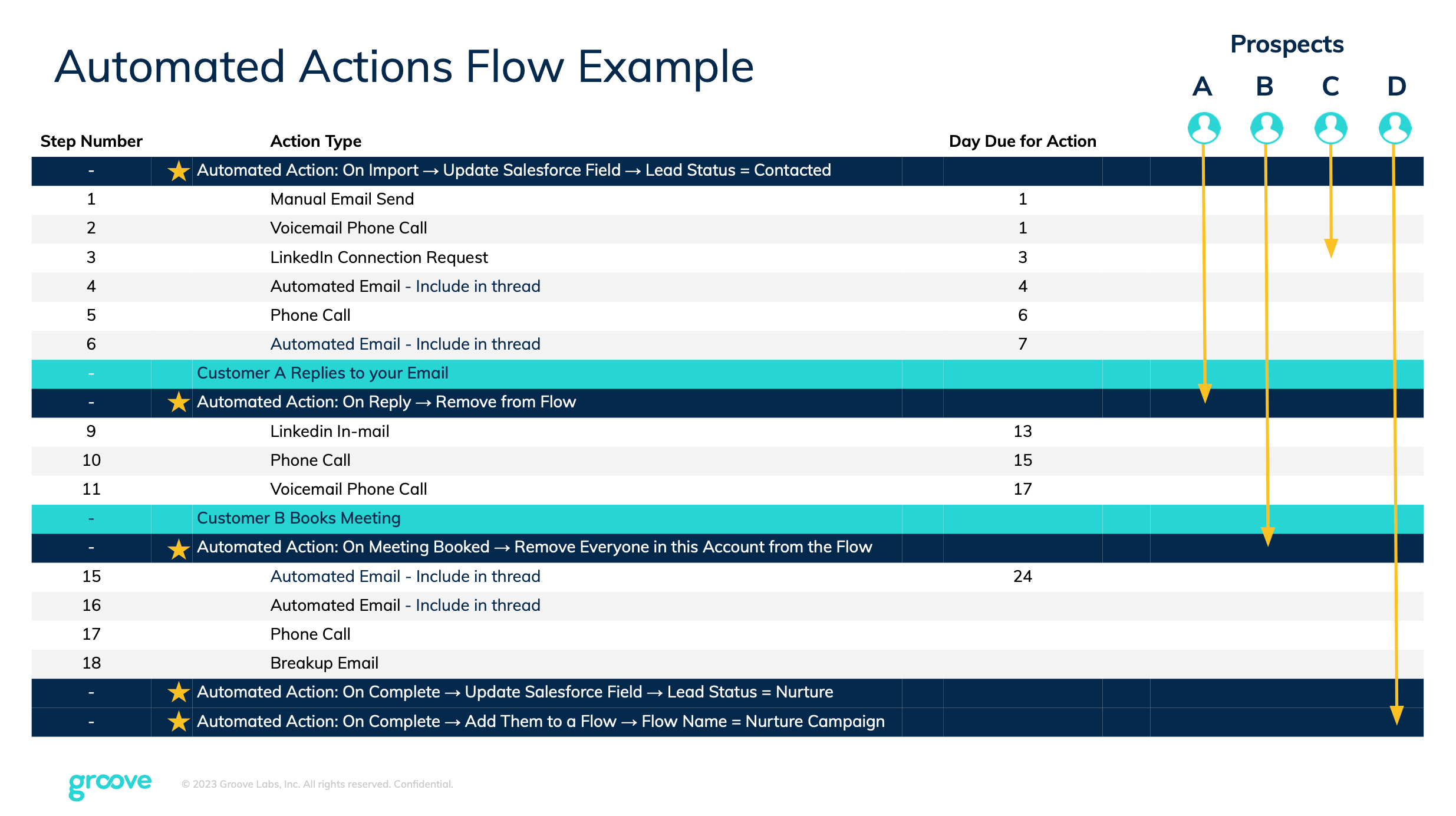Outbound Trends

Every Sales Organization Can Benefit From a More Efficient Outbound Process
With Groove, you can improve target account coverage and increase conversion rates by focusing on the following key areas to effectively scale and manage your outbound sales process.
- Targeting: Who are the people we’re adding? How many contacts should we be working to meet our goals?
-
Messaging: 3 ways we recommend building out an effective messaging.
-
Actioning: Create a consistent process to optimize your strategy and enable your teams.
-
Reporting: Understand what’s working – and what’s not so you can identify gaps and optimize over time.
-
Governance: Create a consistent process to optimize your strategy and enable your teams.

1. Targeting
Save time and resources by focusing on potential customers who are most likely to be interested. By reaching the right audience, sales teams have a better chance of converting leads into satisfied customers.
Adding the Right People
The types of people and accounts you add to your Flows has a huge impact on your performance. Targeting the right people is key to a successful outbound strategy.
Best Practices:
-
Identify the characteristics of your ideal customer, including company size, industry, job titles, pain points, and challenges (this is your ICP)
-
Use your ICP to create a list of target accounts to prioritize for outbound sales efforts
-
Research your target accounts to understand their needs, challenges, and pain points
-
Look for commonalities among your most suc
How Many People Should I Add to a Flow?
Understanding how many people should be added to your Flows can help you accurately forecast pipeline, assess team performance, and hit your numbers.
We recommend working backwards from your revenue goal using our calculator.

How Many Activities Should I Be Completing?
Understanding how many activities should be completed can help you accurately forecast pipeline, assess team performance, and hit your numbers.
We recommend working backwards from your revenue goal using our calculator.
Omnibar Prospecting Workflow
Try this powerful workflow. Use the Omnibar to find new people faster, add them to Salesforce, and enrich their records with the latest info —all from one screen.
-
Pop out the Omnibar while prospecting in Linkedin.
-
Leverage Zoominfo to grab contact details in parallel.
-
Reference Omnibar to see Salesforce insights and update relevant standard and custom fields.
-
Add to a Groove Flow via Omnibar in a single click.
2. Messaging & Content Strategy
A tight messaging and content strategy helps teams communicate effectively with potential customers and make their messages consistent.
By customizing their messages and testing different approaches, sales teams can increase their chances of success.
Developing Groove Flows
Provide a consistent, personalized, and effective framework for sales reps to engage with prospects and move them closer to a buying decision.
Best Practices
- More touches! Studies show that Sales cadences with 11 or more touches had a 10% higher conversion rate compared to cadences with fewer than 6 touches (Bridge Group).
- Coordinate touches in groups for increased engagement.
- ex. Email, call, and Linkedin InMail on day 1 is known as a “Triple Touch” and greatly increases engagement.
- Use every channel. Mix calls, emails, Linkedin connections and InMails, and on-site visits (if applicable) for the best results.
Improve Time to Value with Master Flows
Master Flows help you create consistent messaging with a personal touch, while controlling the content, structure, and execution of your Flows.
Best Practices
-
Create a Master Flow library that reps can leverage and add their own contacts to without having to draft their own individual communications from scratch.
-
Give reps the freedom to personalize components of each message and optimize over time.
-
Focus on Flow optimization by A/B testing to compare the top performing steps in your Flow.
-
For Outbound, we recommend a high-touch strategy over a longer period of time:
-
Flow mix: 40% email, 40% calls/SMS, and 20% LinkedIn
-
Touches: 10 to 25
-
Duration: 2 to 4 weeks
-
Building Your Own Prospecting Flow
Groove Flow Recommendations:
- Number of Touches: 10 to 22
- Duration of Flows (wks): 2 to 4
Suggested Audience
Target prospects not currently engaged with your company. These contacts are not familiar with your company, product, and services and it may be difficult to catch their attention.
A/B Test Your Messaging
Make data-driven decisions about which marketing or sales tactics are most effective in achieving your goals
Best Practices
- Use Flow variations to test different messaging by (sub)industry and audience
- Ex. Flow 1 = Industry 1, Flow 2 = Industry 2
-
A/B test Templates within Flows to split messaging between one audience
-
Compare Open, Click, and Reply rates for A/B Tests in Groove Outcomes and Analytics
Multi-Thread to Win
Engage with multiple stakeholders within the target account to build a broader support network and increase your win rates.
Best Practices
-
Understand who the decision-makers and influencers are within the target organization
-
Leverage your existing relationships to identify and engage with multiple stakeholders
-
Develop a coordinated outbound plan that involves multiple team members and touches on multiple channels
-
Leverage Groove’s Auto-Contact Capture functionality to add contacts from calendar events and cc’d on emails to Salesforce automatically for multi-threading
-
Ex. Multi-Threading Strategy: When working an opportunity, capture new contacts with ACC and Auto-Import them into a “New Stakeholder Flow” with an email in Step 1 (automatic or manual) introducing yourself and offering to schedule a demo.
-
3. Actioning your Strategy
Reach more potential customers faster and reduce the burden on sellers by automating repetitive tasks and allowing them to focus on building relationships.
By capturing clean data and automating actions, sales teams can make better decisions, gather deeper insights, and improve their overall performance.
Increase Flow Touchpoints
Build Automations into Flows to increase touches without increasing seller workload.
- Automate bubble-up emails if there is no reply
- Set up an automated action to automatically remove the contact from a Flow “On Reply”
- Automatically create a Salesforce task for a contact owner to follow up after an engagement
Streamline Import Processes
Remove manual steps for adding people to Flows and queue reps to engage with the right people by setting up Auto-import.
-
Create a SFDC report with specific criteria
-
Example: “Newly created leads today”
-
Remember to include the record owner in the report for auto-assignment
-
-
In Flow Settings set up Auto-import via your Salesforce report into a Master Flow
-
Define how you want to auto-assign leads per rep within your flow
○ Lead/contact owner ○ Custom field
Ensure Flow Hygiene
Move people between Flows and update Salesforce fields automatically based on events and criteria such as email reply or updated status.
- Automatically refresh and update records/people at the end of a Flow
- Automated Action: On “Complete”, add people to a Nurture Flow, built to keep contact with the person over a longer period of time
- Update Salesforce on Engagement
- Change a person’s status to “Engaged” and remove them from the Flow if they open an email

4. Reporting: Measuring Success
Measuring Outbound Sales Success
Measuring outbound sales success is critical to optimizing your outbound sales strategy. Key performance indicators (KPIs) to track may include meeting booked, opportunities created, response rates, conversion rates, and sales cycle length.
Sales teams should regularly review their metrics and adjust their outbound sales strategies based on their findings.
Evaluate Messaging Outcomes
Leverage Groove Outcomes to understand which messages, steps, and users are generating the most engagement, positive conversations, and opportunities — so you can fill the gaps. Learn more.
Improve Visibility into Sales Activities
Configure automations that give you more visibility into deals without any additional seller burden.
Recommended Automations:
- Enrich contacts with Engagement data: Update Campaign Member Status on Email Reply
- Enrich events with associated messaging data: Update Event with Flow Data
- Enrich Opportunities with associated messaging data: Update Opportunity with Flow Data
Improving Analytics with Automation
Powerful Automation Workflows can super-charge your team’s ability to report on Groove activities, the success of different Groove templates and Flows, and their impact on revenue. Get the guide.
5. Governance
Creating a clear structure around governance will ensure your new strategy is successful long-term
- Form a cross functional tiger-team with internal stakeholders (Sales, Marketing, Rev Ops) and hold a weekly “Leads War Room” to review:
- Content
- Lead flow
- Gaps
-
Create a process for requesting new content and flow creation access.
-
Build a repository of Master Flows organized by using Groove Labels.
-
Hold messaging workshops to train your qualification team on your new workflow and strategy.
-
Understand Deliverability Issues in Salesforce.
-
Add controls to ensure that ONLY the right people can modify Flow and Template content.
